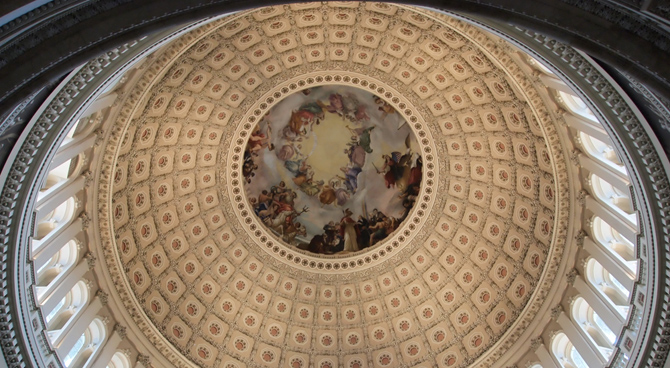Before the shutdown, the economy was booming. Credit Trump’s policies, not Obama and Biden’s.
By Phil Gramm and Mike Solon
July 8, 2020 1:10 pm ET
The year began with a recovery that belied every negative cliché about the Trump tax cuts and regulatory reform. Tax cuts demagogued as giveaways to the rich were creating higher wages and bonuses for workers and producing the lowest unemployment rates on record for blacks, Hispanics, single women, the disabled and those with criminal records. Wages at the bottom were growing faster than at the top. The once-disappearing middle class was prospering and propagating again. According to the United Nations, the birthrate in the U.S. had started to rise for the first time in the 21st century. In short, the postwar prosperity that we feared had been lost forever was coming home to America.
By January the Congressional Budget Office reported that the tax cuts predicted to blow a hole in the deficit had generated enough additional growth to add $7.4 trillion to gross domestic product over the next 10 years, raising average annual per capita income by $2,250. Over the next decade, that increased growth is projected to generate $700 billion more in state and local taxes and an additional $1.438 trillion of new federal revenue, offsetting the tax cut’s projected 10-year cost of $1.456 trillion. Gallup found that President Trump’s economic approval rating was 63% in January, an extraordinary number given the president’s overall disapproval rating of 51%.
The best of times for America were the worst of times for those whose rallying cries of class warfare increasingly rang hollow. When they could no longer deny prosperity, they claimed credit for it. President Obama congratulated himself on Twitter for his 2009 stimulus that paved “the way for more than a decade of economic growth.”
But facts are stubborn things. Under Mr. Obama’s policies of tax, spend and regulate, real per capita income was up by only 5.6% and job growth was up only 5% some nine years after the start of the 2007-09 recession. Compare that with 21% income growth and 18% job growth under President Clinton nine years after the start of the 1990-91 recession, or 24% income growth and 20% job growth under President Reagan nine years after the start of the 1981-82 recession. Real median weekly wages have risen six times as much in three years under Mr. Trump’s policies as they did in eight years under Mr. Obama’s policies. Labor-force participation has risen by 1.1% under Mr. Trump while it fell by an astounding 4.6% under Mr. Obama.
In the first three years of the Trump administration, total employment was up 4.7% and real median household income was up $4,384, to an all-time high. Who benefited most? The groups Democrats claim to represent: blacks, Hispanics, single women, Native Americans, high-school dropouts, the disabled and those with criminal records. Each of those groups enjoyed the lowest unemployment rates on record. Blacks and Hispanics had the lowest incidence of poverty ever recorded.
Then the pandemic and shutdown hit. From the lowest unemployment rate in 50 years, America suffered the highest rate in 88 years. Joe Biden claims Mr. Trump has “squandered” the Obama-Biden recovery. He blames banks and businesses, ignoring that the government ordered the shutdown that crippled the strong recovery. Mr. Biden wants “to transform” the economy, beginning with a repeal of Mr. Trump’s tax cuts and deregulatory program.
Now, as Americans begin rebuilding the economy after the destruction of the pandemic shutdown, the principal question of the November election is whether to return to the policies that brought us growth or to the policies that produced stagnation. Given the strong economy during the primaries, even Democratic voters rejected a radical transformation of the economy.
But now Democratic leaders want to use the economic destruction of the pandemic shutdown as an opportunity to implement a leftist agenda, with enormous new taxes, federal control of the health-care system, crippling energy mandates, a bailout of profligate states and cities, and an overpowering regulatory state. Mr. Biden is the face of the Democratic Party, but Elizabeth Warren, Bernie Sanders and Alexandria Ocasio-Cortez are its heart. Their proposals go well beyond doubling down on a big-government approach that didn’t work; they are to the left of any governing socialist party in Europe.The task of government in the next four years will be to rebuild the economy. The decision in November is which road leads to American prosperity. We tried a little socialism 12 years ago, and it produced stagnation and a failed recovery. Can we realistically expect that a lot more socialism will work for us now?
Unlike most elections, we have more than promises to inform us. We have 12 years of accumulated evidence on the performance of these two competing visions. If presidential elections are about results, let the guide be the biblical admonition: “Ye shall know them by their fruits.”
Mr. Gramm is a former chairman of the Senate Banking Committee. Mr. Solon is a partner of U.S. Policy Metrics.




